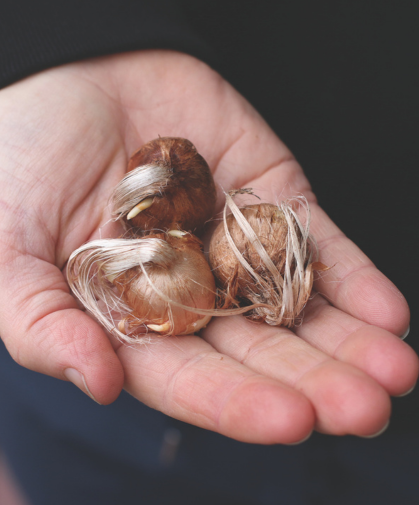Saffron Crocus - Key Growing Information

Planting: Plant corms 3–4" deep and 3–4" apart. Press corms into the prepared soil or place into holes created by a dibble and cover with soil. Plant corms flat side down (tops of corms often display an elongated piece of dried stem material and bottoms often display the small white shoots). Do not overwater as saturated soil will cause corms to rot. Mulching is not recommended. Corms will multiply over successive years in the ground. After 4 to 5 years, dig, divide, and replant to prevent overcrowding.
Light Preference: Plants thrive in full sun but will tolerate part shade, requiring at least 5–6 hours of sun per day at the time of bloom.
Plant Height: 4–6" flowers; 4–10" foliage.
Hardiness Zones: Perennial in Zones 5–8 but known to perennialize in Zone 4. Saffron crocus is sensitive to photoperiod and can only grow between latitudes 30° and 50°.
Harvest: The stigma of the flower is the thread of saffron used for cooking. You can expect each corm to produce 2 to 4 flowers and each flower to produce 3 stigmas. The easiest way to harvest is to pick whole flowers just before they are fully open. Grasp the blooms at the base and pull up. Once harvested, bring the flowers to a convenient location for processing. While the flowers are still fresh, separate the orange-red stigmas from the center of each flower. Air-dry the threads in a dark and warm 80–95°F (27–35°C) location.
Storage: Store dried saffron in an airtight container in a cool, dark location. Saffron quality can degrade when subjected to light; if not in a dark location, store in an opaque container or wrapped in foil.
Soil Requirements: Saffron crocus performs best in a well-drained soil, rich in organic matter. Avoid excessive nitrogen and fresh manure.
Pests and Disease: Both corms and plants are attractive to rodents. Protect the crop from rodent damage throughout the crop's lifecycle.
Uses: Bedding flower, culinary spice
Scientific Name: Crocus sativus
Alternate Common Names: Saffron crocus, autumn crocus

